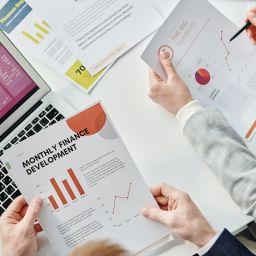GST
Goods and services tax (GST) is levied on the majority of products and services and is included in their prices. If you are registered, you have the ability to reclaim the Goods and Services Tax paid on goods and services purchased for your business. Moreover, you can charge this tax (at a rate of 15%) on your sales, which is then collected on behalf of the government.
No matter if you’re a sole trader, contractor, in a partnership, or a company, once you anticipate earning more than $60,000 within a year, you are required to register for GST. Failure to register at the appropriate time may result in penalties.
However, if you don’t expect to reach that threshold, it is your decision whether or not to register. One advantage of voluntary registration is that you may be able to obtain a GST refund, especially if your expenses exceed your income. Once you’ve registered, you must file regular Goods and Services Tax returns.
TIP
If you’re registered for GST, it’s important to incorporate it into your prices to avoid being at a loss.
Linda operates a home-based business where she sells bags that she personally creates, while John has recently launched his construction business.
- materials and supplies for making her bags
- her new sewing machine.
- taxi fares to business meetings
- a laptop she bought to manage her business finances
- the accounting software she uses
- food and drink bought when entertaining clients.
-
the ute he bought for work
-
his work tools
-
tools he bought for his apprentice
-
the computer, printer and mobile phone he bought for business use only
-
the GST portion of his work mobile phone bill
-
his accountant’s fees.
How it works
- Taxable period, or how frequently you plan to file returns, which can be either monthly, two-monthly, or six-monthly
- Accounting basis, which is determined from these options:
-
Payments basis: GST is recorded in the taxable period when payments are made or received.
-
Invoice basis: GST is recorded in the taxable period when invoices are sent or received, regardless of payment status.
-
Hybrid method: A combination of payment and invoice methods.
The majority of small businesses prefer to submit their returns every two months or six months.
Taxable periods
It is crucial to maintain a record of all invoices and receipts for expenses and retain these records for seven years. Additionally, set aside any GST payments received to send to Inland Revenue during return filing. Keep in mind that you are simply collecting this tax on behalf of the government, and you will need to pass it on when you file your return.
Getting ready to register for GST — Inland Revenue
How to register for GST
- Your IRD number
- Your business industry classification (BIC) code
- Your preferred taxable period, which can be monthly, two-monthly, or six-monthly for small businesses
- Your preferred accounting basis, small businesses are encouraged to consider the payment basis. This approach may be advantageous because it enables you to avoid paying GST before receiving payment from your customers.
Upon registration, Inland Revenue’s myIR service offers myGST, a new section for managing and paying online.
myIR — Inland Revenue
If you’re a sole trader, your GST number will be identical to your IRD number.
In the case of partnerships and companies, your GST number will be identical to your partnership or company IRD number.
Completing a GST return
- Your total sales and income
- Your total expenditures, including purchases and expenses
- The total amount of GST charged to customers.
myIR — Inland Revenue
Charging GST — Inland Revenue
Claming GST — Inland Revenue
System that can help at tax time — Inland Revenue
Certain goods and services have GST charged at 0%, known as zero-rated supplies, which are typically supplied to individuals located overseas. Examples of zero-rated goods and services include products or services from New Zealand that are sold overseas, such as exports or some land transactions. Despite being zero-rated, these supplies must be recorded on your returns.
Check if zero-rated supplies apply to your business — Inland Revenue
TIP
It is recommended that you maintain a separate record of zero-rated invoices, as they belong to a distinct section of your return.
If your annual turnover falls below $60,000 and you no longer want to charge GST, or if you are shutting down your business, it is essential to inform Inland Revenue by contacting them or sending a message via myIR. You must specify the date you intend to cease charging. When you cancel your registration, GST is typically due on goods and services retained at that time.
FACT
Failing to deregister requires the continued filing of returns and possible payment of GST on collected payments, even without charging it.
Common mistakes
-
Registering for GST before reaching the earning threshold of $60,000. It’s important to weigh up the pros and cons of registering before making a decision.
-
Selecting the wrong accounting basis when registering, which determines how you claim and return GST. If you’re a small business, contractor, or self-employed, the “payments basis” option is usually the best choice.
-
Failing to keep accurate records, receipts, and invoices, or not keeping them for the required seven years.
-
Failing to charge GST if you’re registered, even if your turnover is low. You must continue to collect and pay the tax until you notify the Inland Revenue that you’re deregistering.
-
Neglecting to deregister if you close your business and don’t plan on starting another taxable activity within the next 12 months. In such a case, you must cancel your registration within 21 days.
-
Neglecting to account for the GST on any business assets you hold at the time you deregister. If you keep assets after cancelling your registration, whether for private use or another business, you must make an adjustment in your final GST return. Your final return should include all taxable goods and services from the beginning of the taxable period until the date of cancellation.















